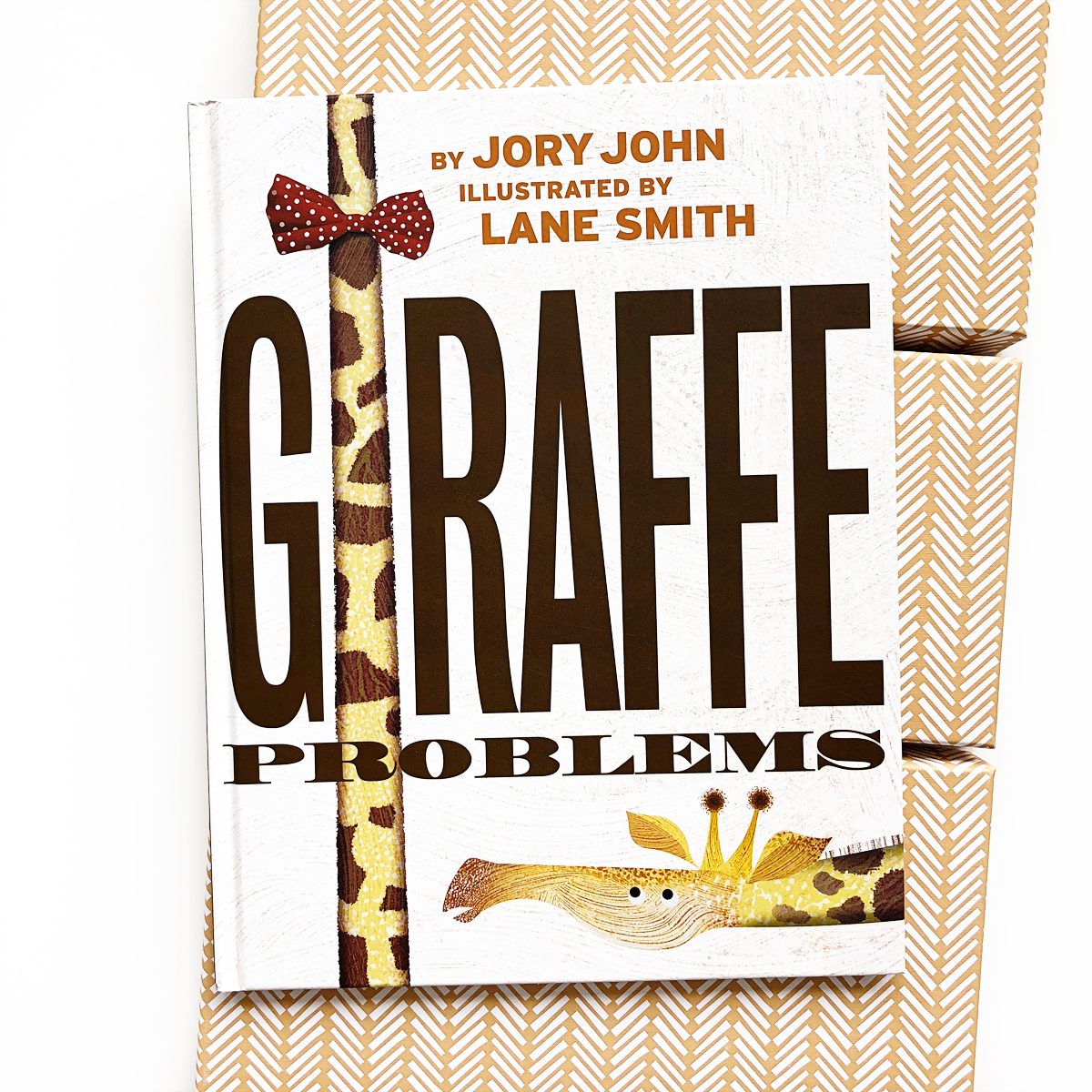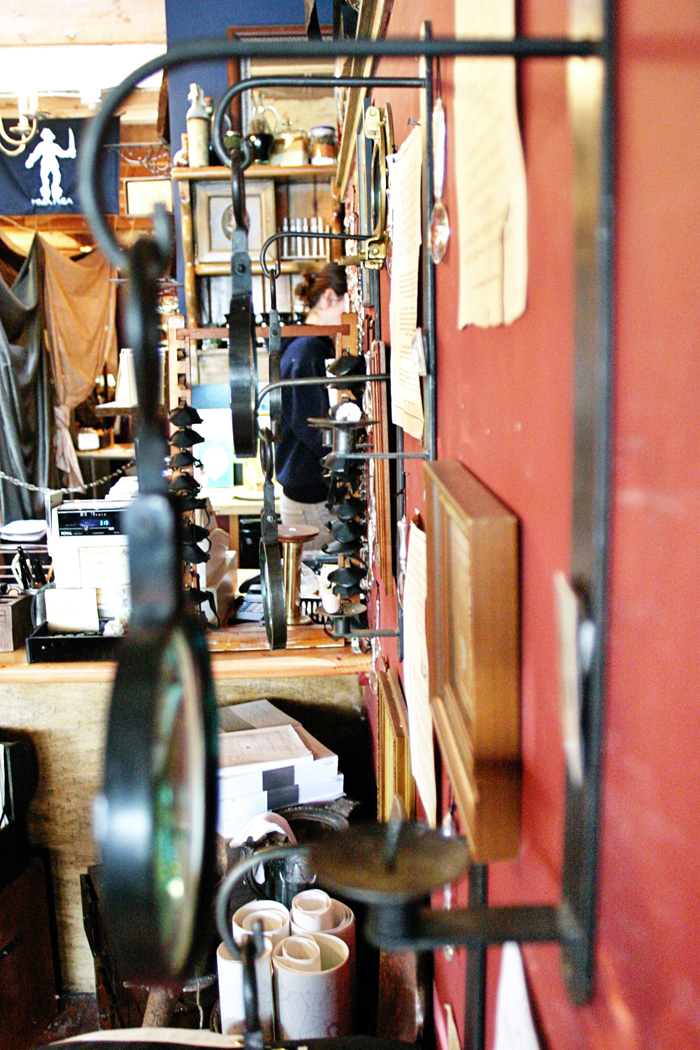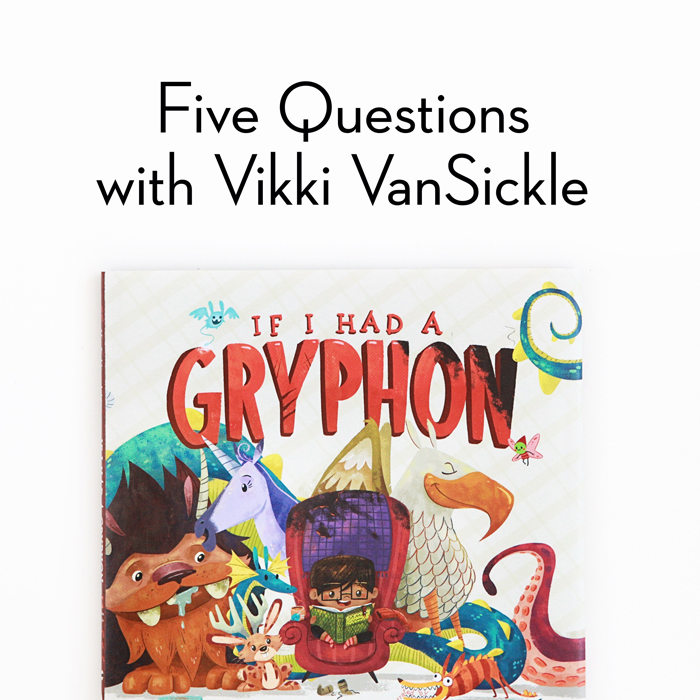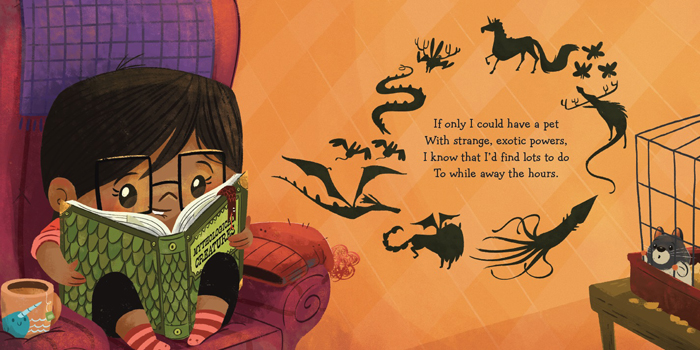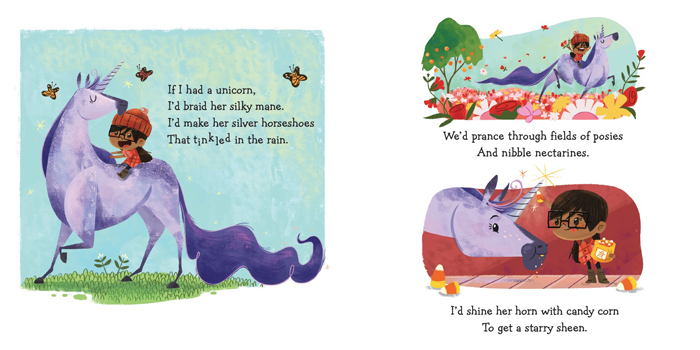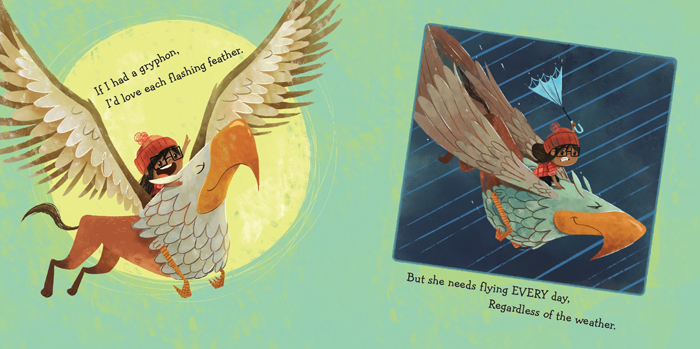We’ve had the good fortune of interviewing some pretty stellar authors and illustrators here on our blog, and have truly loved each and every Q & A session. But today’s interview goes down in history as perhaps one of our favorites of all time. Welcome, Jory John.
Jory’s most recent book is Giraffe Problems, illustrated by Lane Smith. It’s about a giraffe named Edward who’s despondent about his long neck until he meets a turtle named Cyrus who’s depressed about the “little excuse for a neck” he’s saddled with. This verbose neckless turtle has had a weeklong banana dilemma that Edward might be able to resolve. And the two just might become the most unlikeliest of friends.
Jory will be answering some questions from you all. If there’s anything you ever wanted to ask, leave a question on this Instagram post. One person (and their question) will be picked at random to receive a copy of Giraffe Problems and a board book version of its predecessor, Penguin Problems. Open to US residents and questions can be submitted until the end of day on Wednesday, October 17, 2018.
Without further ado…
Who were some of your favorite authors growing up?
There were so many! But just off the top of my head, let’s say James Marshall and Judy Blume and Shel Silverstein and Charles Schulz and Beverly Cleary and Gary Larson and Ursula K. Le Guin and―as I was typing this and thinking back and trying to jog my memory―I just remembered that I used to love books by Ruth Chew, who you don’t really hear about too much, these days, as I think a lot of her stuff is out of print. But she wrote tons of stuff involving kids discovering magical powers. I must’ve read at least fifteen of her books. And one more big shout out: I remember being about six years old, and walking around showing Bunnicula by Deborah Howe and James Howe to anybody who would pay attention to me. There was something so funny to me about a vampire rabbit. Actually, come to think of it, there still is.
When you were younger, what did you think you were going to be when you grew up?
For the longest time, I wanted to be a syndicated newspaper cartoonist with my own daily comic strip. I was heavily inspired by Peanuts, The Far Side, and Calvin and Hobbes, and I genuinely think my childhood coincided with the Golden Age of newspaper comics. To have those three amazingly original comic strips running simultaneously, every single day, was such a gift ... all for the price of a quarter. I’ve never lost my love for comics. In fact, I currently collaborate with my lovely wife, Alyssa, who is a fantastic and hilarious illustrator, on a three-times-per-week webcomic called Animals Got Problems (which you can find on Instagram, dear readers). And I’ve made a bunch of other comics along the way, as well. I love the medium and I still read newspaper comics, webcomics, and graphic novels, any chance I get. Relatedly, I wrote a picture book earlier this year, illustrated by the incredibly talented illustrator and cartoonist Liz Climo, entitled Can Somebody Please Scratch My Back? which was basically written in comic-strip form, entirely in dialogue with word bubbles. That was a blast.
How did you get started writing for kids?
I’ve always loved writing. I remember sitting inside on weekends when I was a kid, making up stories, drawing comics, writing scripts, creating little worlds, while other kids were out and about, absorbing sunshine and learning how to pilot a bicycle. I never really thought about the “Why am I doing this?” part too much. I just sort of did it. Writing runs in my family, so that was definitely helpful and inspiring. My grandmother was a print journalist for decades and my great aunt is a wonderful poet (who still sends me original poetry in the mail, to this very day) and my mom produced radio shows … and creativity and writing and books was one of the things that my family really bonded over, over the years. Meanwhile, I've worked with kids in a variety of capacities … as a program director at a nonprofit literacy center, a tutor, a camp counselor, and so on. I was also initially an education major, intending to become a teacher, until I switched to journalism, intending to become a journalist. So yeah, it was really a natural fit for me to combine my love of writing and my love of working with kids into one profession. Voila!
How did your time at 826 shape you as a person and writer?
If you’re reading this and you’re not familiar with 826 National, you should look it up. Go ahead. I’ll wait. I’m going to go get a snack.
I’m back. I got some cheese and crackers, if you’re wondering.
In any case, this incredible organization was founded by Dave Eggers and I was the programs director at 826 Valencia, the San Francisco branch, for about six years, coordinating students, volunteers, teachers, parents, student journalists, class field trips, bookmaking sessions, training sessions, book projects, special events, and so forth. I really grew as a leader and a writer and a person in that position and I could do this entire interview about the amazing things that 826 is doing every single day and why you should go get involved. Go ahead. I’ll wait.
Also, the folks at 826 were so open-minded and I was allowed to come up with lots of ideas and turn them into book projects and other literary endeavors. For instance, when Barack Obama was first elected president in 2008, I asked Dave if we could create a book of children’s letters to the new president. He immediately said yes, we got kids in all of the chapters across the country writing letters, we compiled and edited and designed a book, and it came out on President Obama’s inauguration day in 2009. The kids’ letters were featured in the “New York Times” and “This American Life” and “People” magazine and they were mentioned on ABC news and there’s an honest-to-goodness photo of President Obama holding their letters. Pretty amazing! That all happened―from concept-to-publication―in six weeks. I think those situations helped me to realize that pretty much anything was possible if you’re starting from a good place, with a good idea, and you’re willing to work hard.
Meanwhile, during my tenure at 826, even though I was wildly busy, I’d try to find the time to write something of my own, whether it was a book review, or a humor piece, or a newspaper article, or later, humor books, and then children’s books … and I slowly started piecing together an outside writing life. Eventually, I left to pursue writing, full-time. But I wouldn’t trade that job or those years for anything.
What is your writing process like for picture books? Where do your ideas come from?
I definitely like to switch things up a bit with my process, so sometimes I’ll write on my computer, sometimes I’ll write longhand in a journal, sometimes I’ll sit at a cafe, or in a park, sometimes I’ll stay at home in my office with my heater running and some music blasting.
One thing that I do regularly, though, is something I call “Idea Time.” It goes like this: I get a big stack of blank index cards. I sit for an hour. I write one idea per card. It’s really that simple. Not all the ideas are necessarily book ideas … they can be anything. But after an hour, I’ll put the cards away. Then, a couple of days later, I’ll take them back out and sift through them and look for, say, the three best ideas of the bunch. From there, I’ll try to expand them into drafts.
My mind is all over the place, so, along with children’s books, I love to conceptualize other projects, like humor books or games or a book of postcards I just made with my wife, called, “I Miss You Barack Obama, which was published a couple months ago.
To try to answer your question about where my ideas come from, I think the very first step (and I’m surely not the first to say this) is finding a comfortable place to sit, taking out a pen and some paper, and just going for it. Start writing things down. Don’t wait for inspiration. Write down a potential title, write down a character’s name, write a first sentence, think about somebody whose life you’d like to explore, see what direction that takes you. Make lists. Make bubble graphs. Draw somebody, give them a word bubble, and figure out what they’d say. Try morning pages, where you just write for twenty-five minutes without editing or stopping. Start a journal. Just get something down on paper. That’s where ideas come from.
If you’re just walking around, waiting for that perfect idea to strike, you might be walking around and waiting for quite a while. Treat this like a job, with concrete hours, and really just sit there and make it happen. And don’t give up when you have tough writing days. We all have those.
What inspired Penguin Problems and its companion book Giraffe Problems?
I suppose I have a tendency to get caught up in some of the smaller details of life. I catch myself complaining about little things. I’m not proud of it, but I’ll own it, here and now. In any case, I had a realization that we all do this, to some extent, when we’re tired or annoyed or there are just too many things coming at us on any given day. It’s hard to always think “big picture” and write in your gratitude journal when you’re caught up in the little details and annoyed at a motorcycle driving by, or whatever. So that got me thinking about what animals would sound like if they were walking around, muttering stuff about their daily annoyances. On top of that, I have a love of penguins (who doesn’t?) and thought that a.) they would be really funny creatures to feature and that b.) a story about a penguin in the middle of an icy landscape would provide plenty of space for an artist to explore. I should say that I never dreamed that artist would be the legendary Lane Smith. Boy oh boy, did that work out quite nicely! With Giraffe Problems, we wanted to continue our look at animals complaining about stuff. I had an idea about a giraffe who feels bad about his neck and I wrote something I was really happy with. And it went from there. We also wanted to switch up the location and the look and the color palette and add in a few more surprises. I am so incredibly proud of both of those books and I’m so happy that they’re finally out in the world. Working with Lane has been an incredible experience. He is so talented and kind and humble.
What are some of your biggest challenges in writing?
Distractions! I miss the days of basic typewriters, where all you had were ideas, paper, and keys with various letters on them, which you could use to form words and then, later, sentences. Actually, I still own a typewriter and I should get back to using it. As the old saying goes, “There’s less of a chance of repeatedly checking Facebook on your old-fashioned typewriter that doesn’t have an internet connection.” Also, because the process of writing these books takes at least two years from idea to publication―and sometimes much longer―you have to learn to be very patient. Something I might finish this afternoon in October, 2018, would probably come out in late 2020 at the very earliest. I’m a person whose legs literally bounce up and down while I’m sitting somewhere, so patience isn’t my all-time best virtue. But I’m getting better at it. It’s all sort of like time travel, in a weird way. Like, Giraffe Problems has finally caught up with me, and I wrote it in 2016. Lastly, everybody gets discouraged from time-to-time. It’s all about being flexible, being willing to move on to other projects, and being willing to toss stuff out that’s not working, or come back to it later, with fresh eyes.
What does a typical day look like for you?
I make a to-do list every single day, without fail, and there are at least three things on it that must get finished by the time my day is over. Sometimes, my must-finish items are book projects. Or they’re promotional things. Or they’re school visits. Or they’re unrelated to writing. But a list plays a huge part of my day. I highly recommend daily lists and would be personally lost without them. I have a whole list process that I won’t bore you (or me) with.
Usually, included in my daily activities, I have some sort of brainstorming session, as discussed in your question above about ideas. Then I’ll work on whatever I happen to be working on. After I finish answering these questions, for instance, I’m going to get back to something that’s about half finished and due relatively soon. For me, mornings and early afternoons are for writing. The rest of the day is for all the other stuff, errands and bills and phone calls and emails and so forth. But I really think it’s important to get up, get some coffee, get writing and see what happens.
What’s the funniest or most unexpected thing a kid has ever told you about one of your books?
There have been so many great kid moments along the way and I really should’ve been keeping a journal of all of them, just in case this question ever came up! Here are some random memories, again off the top of my head: I remember when my picture book with Pete Oswald―The Bad Seed―came out, a little boy came to the my event dressed as the title character, The Bad Seed. So cool. I also remember a kid writing a great rock song about Floyd Peterson, the title character, from my book with Bob Shea, Quit Calling Me a Monster! It was mostly him screaming “Floyd Peterson!!!” over and over again while thrashing at a guitar. He must’ve been five at the time. There was a kid at a school visit who politely raised her hand and told me that her parents said that she’s Duck, from the Goodnight Already! series. So many more things have happened. I’ll try to remember them for our next interview.
And last question. Cake or pie?
Here’s something potentially alarming: I don’t really have much of a sweet tooth. True story: I would gladly choose a jar of pickles or green olives or chips and salsa over most sweet things, possibly with the notable exception of ice cream, or the song “Sweet Thing” by Van Morrison. But I want to answer your question honestly, and I know it’s an important one, so I’ll go ahead and say pie, and, more specifically―especially since it’s the season and it’s also my favorite type of pie―pumpkin. Oh boy, do I love pumpkin pie. So the answer is pickles, then pie, then cake.
To check out more of Jory’s work, visit his website or catch him at the Portland Book Festival in November. Thanks for stopping by, Jory!





